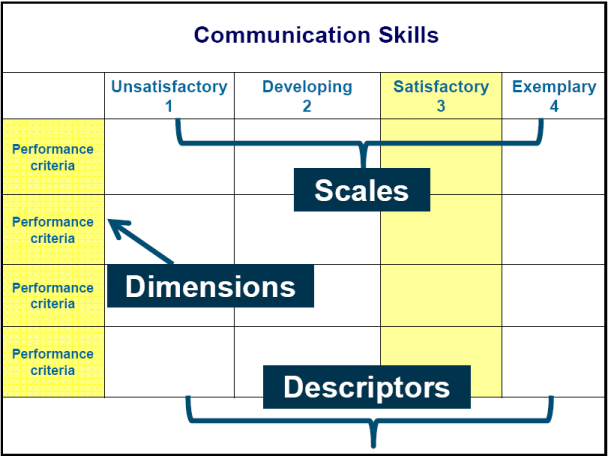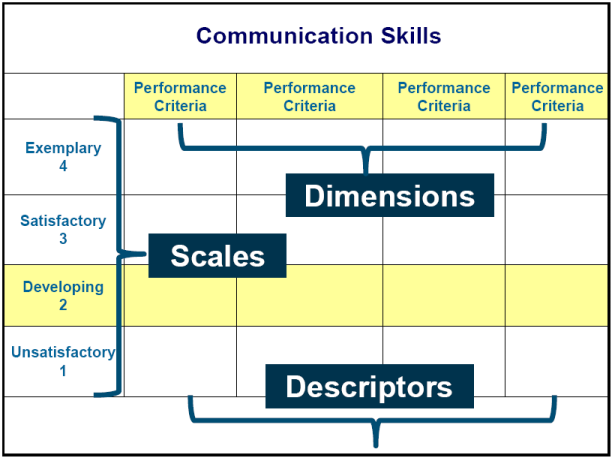
Innovative Assessment
Rubrics for Engineering Education

Introduction
Rubrics are scoring or grading tool used to measure a students' performance and learning across a set of criteria and objectives. There is no unified set of rubrics because the scoring rubrics vary accordingly across different disciplines and courses. There are three components within rubrics namely (i) dimensions/criteria: the aspects of performance that will be assessed, (ii) descriptors: characteristics that are associated with each dimension, and (iii) scale/level of performance: a rating scale that defines students' level of mastery within each criterion. Figures 1 and 2 presented below show that the scales and dimensions of rubrics can exchange position.
Figure 1: Example of Rubrics (Accessed from Rogers, 2010)

Figure 2: Example of Rubrics (Accessed from Rogers, 2010)

The use of rubrics aids teachers to assess students' work objectively and effectively. It can be used for both summative and formative purposes. Rubrics can (a) offer ways to define expectations, especially in dealing with processes or abstract concepts, (b) provide a common language to help teachers and students discuss about the expected learning, (c) increase reliability of the assessment when using multiple assessors, and (d) provide feedback to students on various forms of assessments. (Rogers, 2010)
References:
- Rogers, G. (2010). Developing rubrics. Retrieved from http://apa.fiu.edu/documents_rubrics/CEC%20Rubrics/Developing%20Rubrics%20in%20Engineering%20-ABET.pdf
